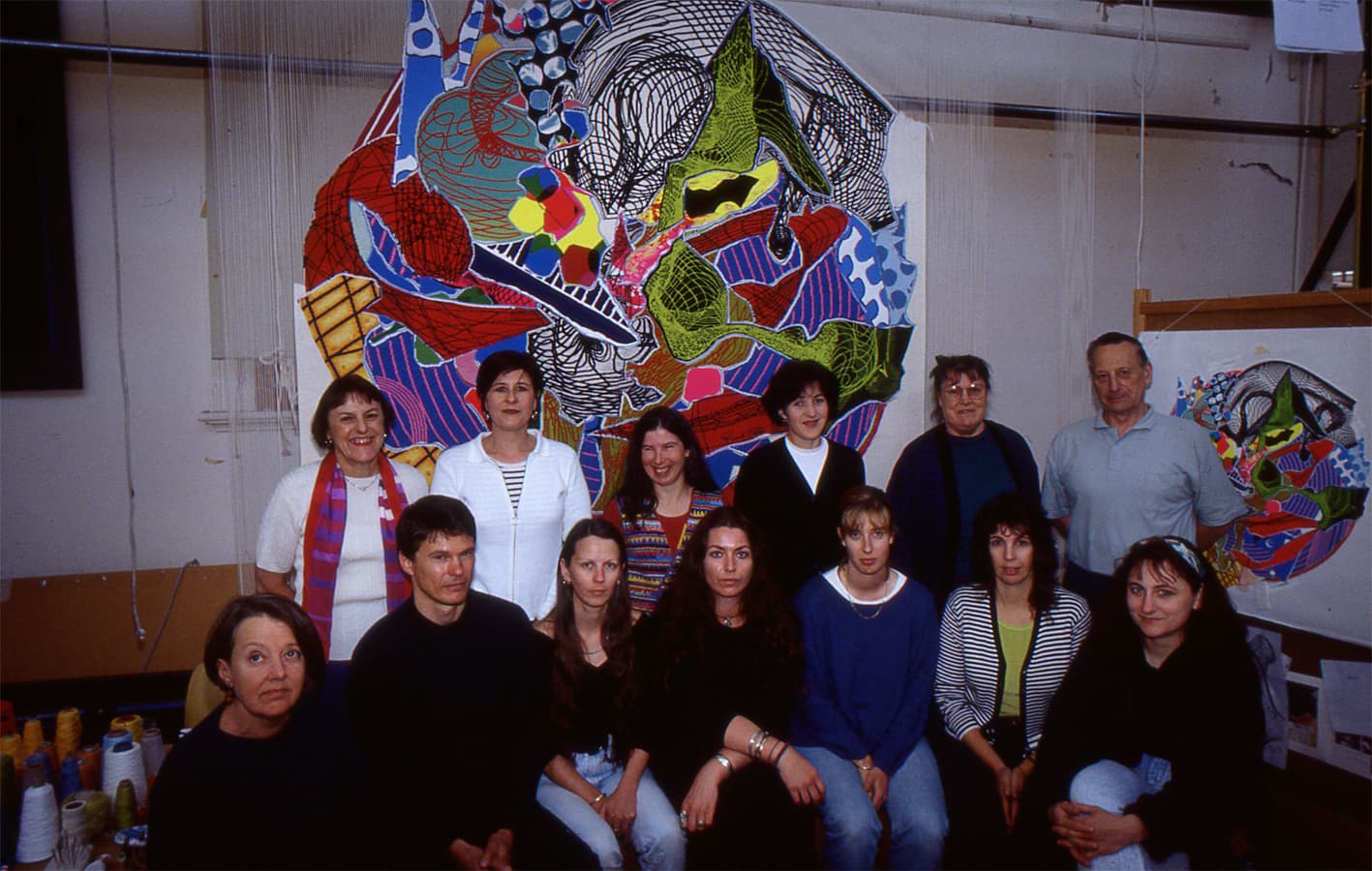



Untitled, designed by prominent American artist Frank Stella in 1996, proved to be a challenging and exciting project for ATW weavers.
Stella is an American painter, sculptor and printmaker, having worked through minimalism, hard-edge painting and post-painterly abstraction in his extensive career.
The tapestry design Stella produced for Untitled is a celebration of the bold colour and kaleidoscopic pattern and line-work that is now synonymous with Stella’s wider practice.
Stella’s work has been exhibited widely and is housed in many major international institutions.
The ATW was thrilled to weave Family Trust, designed by prominent Australian artist who was dubbed the bad boy of the Melbourne art scene in the 1970s-80s, Gareth Sansom.
Sansom’s painting has always been styled as a provocation to middle-class taste. His painting is expressionistic, replete with iconoclastic and sexually explicit imagery. Motifs from popular culture are interspersed with distorted figures and combined into a personal mythology: the canvases teem with manic energy, punk references and rebellious humour.
Family trust is an image brimming with contorted, spewing faces with disembodied eyes, all writhing in a patch worked pattern. The image is claustrophobic, packed with energy and agitated movement, and layered motifs jostling for attention.
Unlike most artists commissioned by ATW, Sansom did not desire active collaboration during the development of his tapestry. Once the design was finalised, he sought no further involvement in the tapestry’s evolution. However, after its completion he confessed that his curiosity had been so piqued that while the work was in progress he prowled around the Workshop at night, attempting to catch glimpses of the tapestry on the loom.
Family Trust is part of the ATW’s collection and was exhibited in a major retrospective of Sansom’s work, entitled Transformer, at the National Gallery of Victoria in 2017-18.
Sansom’s work has been exhibited widely in national and international institutions. He is represented by Milani Gallery in Brisbane.